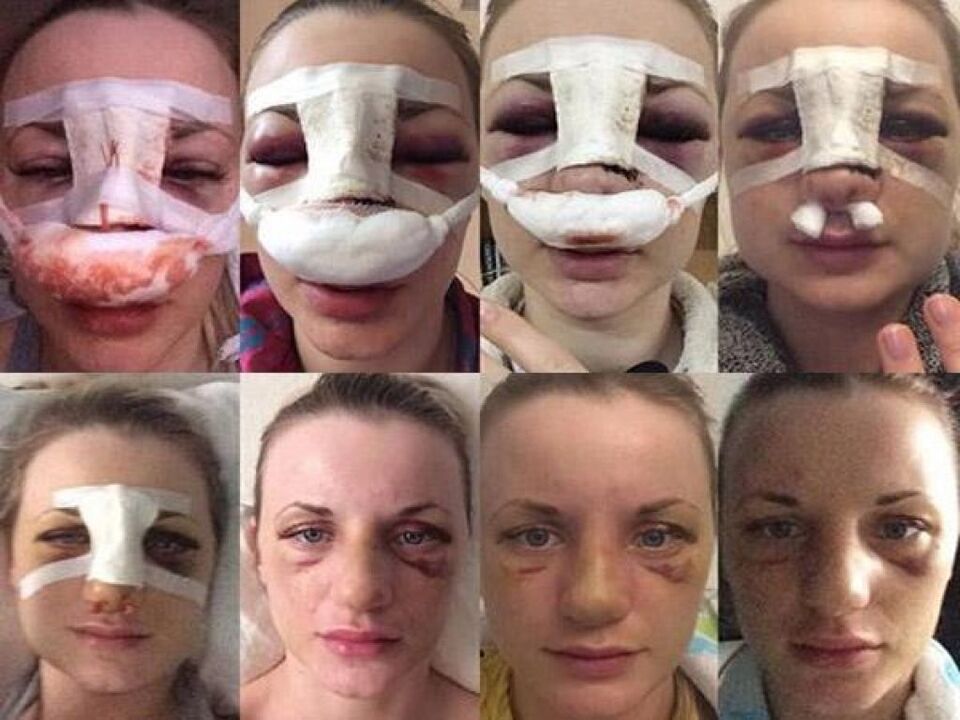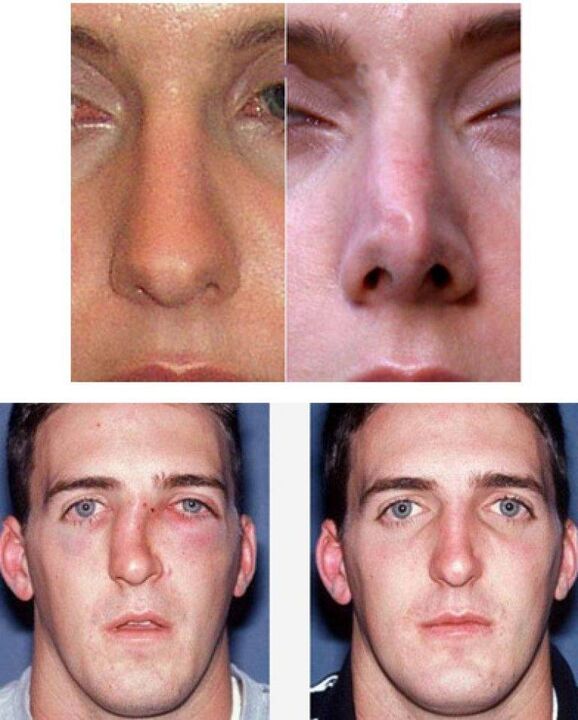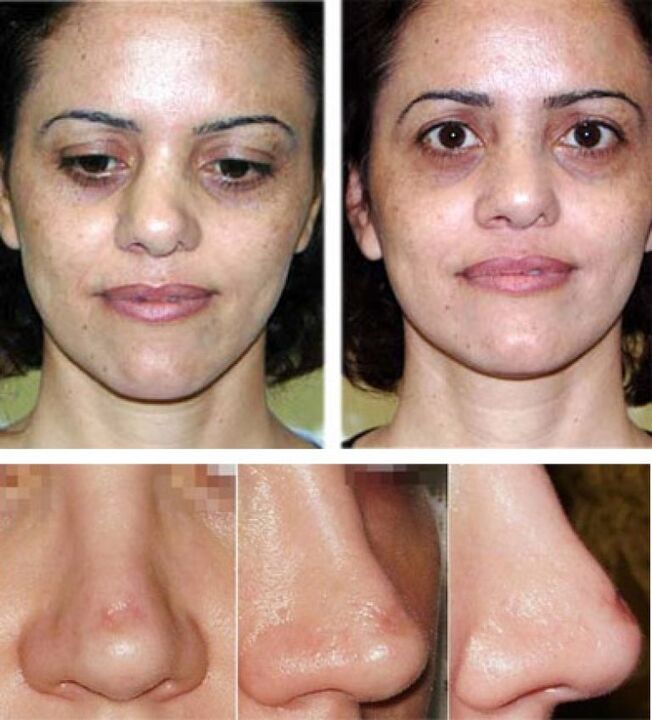Rhinoplasty is considered a major surgical procedure. Often, the results obtained after rhinoplasty are not always as we would like. And this already requires a second operation. Rhinoplasty will be considered unsuccessful if it does not bring the desired effect or worsen the patient’s condition. It should be treated very responsibly. With correction of incorrect nasal shape, loss of odor, curvature of the septum and difficulty in the process of breathing, excessive swelling can be achieved. Therefore, before rhinoplasty, you need to be aware that the results may be different than desired.

Possible complications
Unfortunately, it is quite difficult to predict how the recovery will take place. Even the most experienced doctor will not be able to tell exactly what the body’s reaction will be. Therefore, it is believed that plastic is a work of jewelry, and rhinoplasty is openwork. Postoperative consequences can be irreversible and in preparation for such an intervention, all possible risks need to be properly assessed.
The most likely side effects of rhinoplasty are:
- bleeding from the nose;
- hyperpigmentation at the site of exposure;
- disorders of lymph and blood flow, leading to the formation of edema and hematomas;
- abscess;
- bleeding in the operated zone and estimate;
- complete or partial loss of odor;
- difficulty breathing due to swelling of the mucous membranes;
- curvature of the nasal septum;
- excessive scar tissue formation, which ensures the formation of large scars;
- inflammatory processes in soft tissues.
The occurrence of the above symptoms characterizes an unsuccessful operation.
Causes of complications
Knowing about the possible causes of complications after plastic surgery, preventing them is easier and safer for the body.
Less experience
The most common prerequisite for side effects from rhinoplasty is the low qualification of the surgeon. Insufficient experience causes doctors to neglect certain mandatory matters. In addition, the influence of small development of practical skills is possible. They are especially important in rhinoplasty. The nose has a very complex structure and few errors, any wrong movement can lead to irreversible consequences.
Wrong technique choice
Inexperienced doctors may not necessarily be wrong. Experienced surgeons also make mistakes, and this happens more often than we would like. This is due to the fact that there are several techniques for rhinoplasty. Each of them is most optimal for use in patients with specific anatomical features according to the desired goal. The wrong choice of technique for nasal plastic surgery can also lead to serious outcomes, which in most cases cannot be eliminated.
Disorders in postoperative care
Successful plastic surgery is only half of the positive results. The second part falls on the recovery period. It will be the patient’s behavior at this time that will be very important. Failure to comply with medical recommendations involves the appearance of edema, hematomas and active scarring on the tissues. A doctor who performs plastic surgery can generally form an idea of how recovery will occur and tell you ways that will help alleviate it.
Patients often ignore expert advice before plastic surgery, based on a friend’s experience or their own subjective feelings. And the consequence of this attitude is a deterioration in condition, the appearance of pigmentation, swelling that does not disappear and other unpleasant side effects of the plastic features of the nose that are not successful.

How can complications be avoided?
Anyone would rather prevent a problem than solve it. In situations with rhinoplasty, this is an absolutely correct decision. Minimizing risk helps not only to get high quality results. It makes it possible to avoid the manifestation of side effects and make recovery as easy as possible.
- Selection of doctors and clinics. It is better to choose a specialist, with a "portfolio" that has the opportunity to "get acquainted" directly. This will help to see to what extent he is able to embody the wishes of the patient, to form an overall picture of professionalism. In addition, you can read reviews of those who perform rhinoplasty at selected clinics and from specific doctors. To do this, you need to take some time and try to find information about surgeons, anesthetists on reviews. When choosing, you shouldn’t be guided only by reviews on "original" sites - they are usually moderated and not all can be published. Excellent results will be shown by visual pictures before and after rhinoplasty.
- Design the most accurate project. In order for surgeons to better understand what patients want, modern medicine uses computer -assisted design. Having set the basic parameters of the interface, the program allows you to make the closest to the natural correction. Thus, one will be able to see to what extent he will be satisfied with the expected results from the nasal plastic. The doctor, for his part, will be able to assess the possibility of performing and, if necessary, suggest alternative options. But it should be borne in mind that such a design is not always able to take into account all the anatomical features and therefore cannot guarantee full compliance with the desired result.
- Strict adherence to recommendations before and after plastic surgery. Contrary to popular belief, preparation for intervention is very important. It helps to determine the degree of scarring during remission, to predict the development of hematomas and edema. Therefore, before undergoing rhinoplasty, you should consult your doctor and follow all his advice exactly. Postoperative care minimizes side effects by reducing pain, swelling and scarring after rhinoplasty.

The results will be fully visible after 6-8 months. Until now, minor swelling and edema may appear periodically and disappear. Before term, you should not give in to panic - lymph flow and blood flow are not restored immediately and therefore side effects may appear after rhinoplasty for some time.

Correction
After plastic surgery, patients sometimes want to correct the shape of the nose. This allows, if possible, to recover violations identified during unsuccessful plastic surgery.
This intervention has some complexities. The re -procedure after an unsuccessful rhinoplasty in most cases is more serious than the first. At this stage, the shape of the nose has been corrected from the amount of tissue available. And this can significantly complicate the surgeon’s task. Such rhinoplasty does not in any way guarantee the full achievement of the desired result. Therefore, you need to see some doctors first.
Corrective rhinoplasty is performed if the patient has a minor defect. It is performed using local anesthesia and is nothing more than an adjustment to the fully finished version. Typically, this includes rhinoplasty of the tip of the nose and removal of scar tissue.

Non -surgical correction is also performed if there are no major violations after unsuccessful surgery. It is performed under local anesthesia and may include fillers. They help to "fill", if necessary, indentations and irregularities that are formed, to emphasize the cartilage and to correct angles.
The contour is also intended to correct the details of the nose. It involves the use of hyaluronic acid, which forms a special "frame" for the skin and tissues. With its help, it is possible to correct the details, angles and asymmetries of the nose.
General recommendations
- Rhinoplasty is a very serious and responsible step. When agreeing to the operation, one must be aware that it is impossible to return everything to its previous state. Therefore, psychological readiness is very important to carry out the intervention and wait six months for the final result until the edema is completely gone.
- The selection of clinics and surgeons plays a very important role in performing high quality nasal surgery. Before you go on an appointment, you should read the reviews on the network. The more information found before rhinoplasty, the easier it is to make a decision. You shouldn’t focus on strong advertising - it often hides low professionalism, a large number of additional mandatory paid services and not the best attitude towards customers.
- At the initial consultation, you should try to explain the desired outcome of the plastic surgery as accurately as possible to the doctor. This will help him navigate and design his "work front" better. The surgeon’s understanding of the desired outcome contributes to getting it most accurate. It is likely that conventional rhinoplasty of the tip of the nose will be sufficient, rather than a complete intervention.
- An experienced surgeon will certainly explain the presence of respiratory problems, allergic reactions, past illnesses and medications taken. This helps to compile the most complete clinical picture, based on which it is possible to choose drugs and methods of influence during rhinoplasty. Keep in mind that if a doctor does not state such information, this is a very worrying sign feature for low -skilled specialists.




















